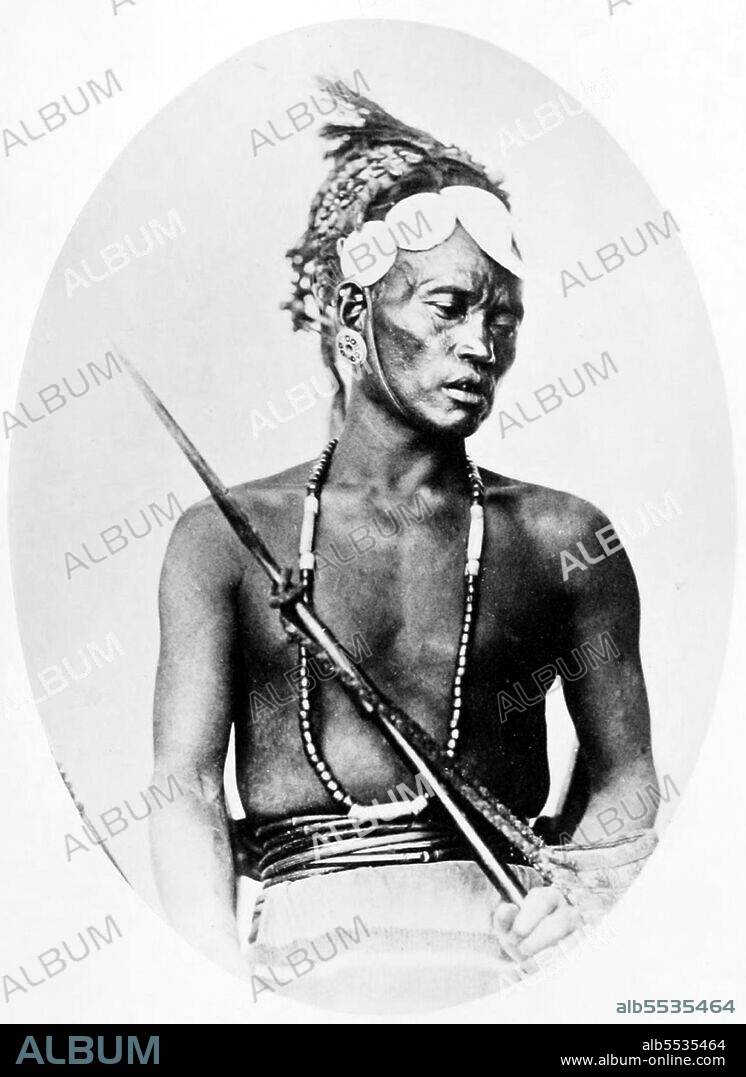alb5535464
India: 'Marauding Tribe: Rengma Naga, Assam'. Early British colonial photograph,1860s.

|
Add to another lightbox |
|
Add to another lightbox |



Buy this image.
Select the use:

Title:
India: 'Marauding Tribe: Rengma Naga, Assam'. Early British colonial photograph,1860s.
Caption:
The term Naga people refers to a conglomeration of several tribes inhabiting the North Eastern part of India and north-western Burma. The tribes have similar cultures and traditions, and form the majority ethnic group in the Indian states of Nagaland, Manipur, Arunachal Pradesh and Assam. The Naga speak various distinct languages, which each belong to branches of Tibeto-Burman, including Angami–Pochuri, Ao, Kukish, Sal, Tangkhul, and Zeme. In addition, they have developed Nagamese creole, which they use between tribes and villages, which each have their own dialect of language. As of 2012, the state of Nagaland officially recognises 17 Naga tribes. In addition, some other Naga tribes occupy territory in the contiguous adjoining states of Manipur, Assam, and Arunachal Pradesh, India; and across the border in Burma. Prominent Naga tribes include the Angami, Ao, Chakhesang, Chang, Khiamniungan, Konyak, Lotha, Pochury, Phom, Poumai, Rongmei Naga, Rengma, Sangtam, Sema (Sumi), Mao (Memei), Maram Naga, Thangal Naga, Yimchunger, Zeliang. Some of these tribes are: Zeme, Liangmai, Mao (Memei), Maram Naga, Nocte, Phom, Pochuri, Poumai Naga, Rongmei Naga, Tangsa, Tutsa, and Wancho. The Naga tribes practised headhunting and preserved the heads of enemies as trophies before the 19th century.
Credit:
Album / Pictures from History/Universal Images Group
Releases:
Image size:
3600 x 4940 px | 50.9 MB
Print size:
30.5 x 41.8 cm | 12.0 x 16.5 in (300 dpi)
Keywords:
ASIA IMAGES • ASIA PICTURES • ASIA • ASIAN IMAGE • ASIAN IMAGES • ASIAN PICTURES • ASIAN • ASSAM • ASSAMESE • BURMA • BURMESE • HISTORIA UNIVERSAL • HISTORIA • HISTORICAL IMAGES • HISTORICAL PICTURES • HISTORICAL • HISTORY IMAGES • HISTORY PICTURES • HISTORY • HISTORY. • INDIA • INDIAN • INDIGENOUS PEOPLES OF THE AMERICAS • INDIO • MANIPUR • MANIPURI • MINORITIES • MINORITY GROUP • MINORITY GROUPS • MINORITY • MYANMAR • NAGA PEOPLE • NAGA
 Pinterest
Pinterest Twitter
Twitter Facebook
Facebook Copy link
Copy link Email
Email
